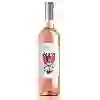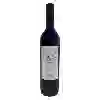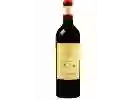
Château de ParazaIn Vino Veritas
In the mouth this red wine is a powerful with a nice balance between acidity and tannins.
This wine generally goes well with beef, veal or pasta.
Taste structure of the In Vino Veritas from the Château de Paraza
Light | Bold | |
Smooth | Tannic | |
Dry | Sweet | |
Soft | Acidic |
In the mouth the In Vino Veritas of Château de Paraza in the region of Languedoc-Roussillon is a powerful with a nice balance between acidity and tannins.
Food and wine pairings with In Vino Veritas
Pairings that work perfectly with In Vino Veritas
Original food and wine pairings with In Vino Veritas
The In Vino Veritas of Château de Paraza matches generally quite well with dishes of beef, pasta or veal such as recipes of boles de picolat (catalan meatballs), farfalle with gorgonzola or vitello tonnato.
Details and technical informations about Château de Paraza's In Vino Veritas.
Discover the grape variety: Macabeu
The white Macabeu is a grape variety originating from Spain. It produces a variety of grape specially used for the elaboration of wine. It is rare to find this grape to eat on our tables. This variety of grape is characterized by large bunches, and grapes of large to medium size. Macabeu Blanc can be found in many vineyards: South West, Cognac, Bordeaux, Languedoc & Roussillon, Rhone Valley, Provence & Corsica, Loire Valley, Savoie & Bugey, Beaujolais.
Last vintages of this wine
The best vintages of In Vino Veritas from Château de Paraza are 2014
Informations about the Château de Paraza
The Château de Paraza is one of of the world's great estates. It offers 24 wines for sale in the of Languedoc-Roussillon to come and discover on site or to buy online.
The wine region of Languedoc-Roussillon
Languedoc (formerly Coteaux du Languedoc) is a key appellation used in the Languedoc-Roussillon wine region of southern France. It covers Dry table wines of all three colors (red, white and rosé) from the entire region, but leaves Sweet and Sparkling wines to other more specialized appellations. About 75% of all Languedoc wines are red, with the remaining 25% split roughly down the middle between whites and rosés. The appellation covers most of the Languedoc region and almost a third of all the vineyards in France.
The word of the wine: Tasting
Sensory analysis of the wine according to a precise procedure and steps, using an appropriate vocabulary.














